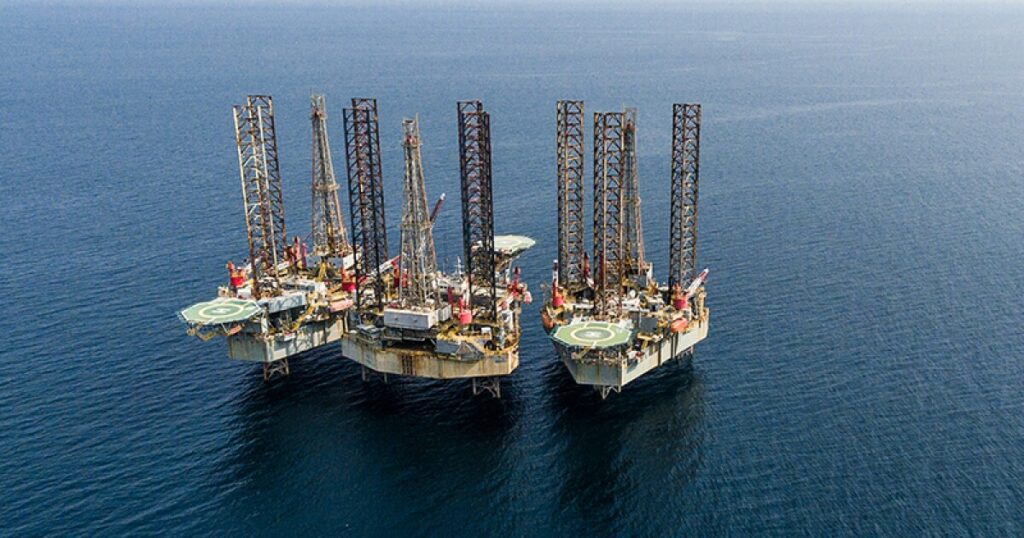Chevron is turning to Africa to restock its exploration hopper. The supermajor has signed up for blocks in Angola, Namibia and Equatorial Guinea in recent months, for a mix of frontier and infrastructure-led exploration and some gas development. The move is part of the broader trend in which international oil companies (IOC) are expanding exploration in the deep and ultra-deep waters on Africa’s side of the Atlantic basin — while divesting onshore assets laden with security risks and potential environmental liabilities or sub-economic operations. The latest move saw Chevron nab Blocks 6 and 11 offshore Equatorial Guinea — from which Exxon pulled out earlier this year, leaving an undeveloped discovery on Block 6. The blocks are located near the Zafiro field and its aging pipeline infrastructure. Gas is the main driver for Chevron, which ditched earlier plans to sell the Equatorial Guinean assets that came with the 2020 acquisition of Noble Energy, including stakes in the oil and gas-rich Aseng field and Yolanda gas field and in the Alen gas condensate field. In Angola, where Chevron’s subsidiary Cabinda Gulf Oil Company signed risk service contracts for ultra-deepwater Blocks 49 and 50 in late June, Chevron is taking a punt on Angola’s western end of the lower Congo Basin, where TotalEnergies reported a dry hole back in 2022. In Namibia, Chevron stuck its neck out in April, when it took an 80% stake in Namibia’s Walvis Basin Petroleum Exploration License (PEL) 82, which is under-explored even by frontier Namibia’s standards. It is adding to a similar-sized stake in PEL 90 where Chevron is acquiring seismic just north of Total’s Venus discovery.
Chevron’s African production has declined in recent years — reflecting the general scale back in IOC investment, after the oil price crash of 2015, and disillusionment with oil governance and high costs in the region’s mature producers, Angola, Nigeria and the Republic of Congo (ROC). While selling assets in Nigeria, Chevron also went cold on Angola toward the end of the late President Eduardo Dos Santos era in 2016, before reforms put in place by his successor, Joao Lourenco, enhanced terms for near field and frontier exploration and gas development, persuading Chevron to stay. The US major’s exploration spending in the region remains low relative to peerslike Total. The$700 million Chevron spent in Africa in 2023, mainly on Nigeria, Angola and ROC, was a fraction of the $9.1 billion the company spent on all oil and gas-producing activities. Ifits African assets are going to compete in its broader portfolio, the company will need to lower its unit production costs, which have climbed steadily to $16.35 per barrel in 2024 from $12.40/bbl in 2021, and are now the highest of any region. Chevron’s Africa exploration spending dipped to $176 million in 2023 from $263 million in 2022. This should rise in the near future if Chevron is to explore its recently acquired acreage. Net proved reserves in Africa have shrunk by 20% since the end of 2020, to just 445 million barrels of oil and condensates — roughly 9.3% of total reserves. Gas reserves have shrunk by 20% over the period to 2,257 billion cubic feet, with Africa accounting for just under 8% of total reserves. Africa’s contribution to oil and gas production, which tallied 341,000 barrels of oil equivalent per day in 2023 accounts for just 11% of Chevron’s total output and has dropped by a similar percentage since 2021.
Chevron’s exploration interest is welcome news for Africa, where countries rely on IOCs to fill the gap left by the near extinction of the hardy independents who once dominated exploration. The exploration trend is manifested in the feeding frenzy around the Orange Basinspanning Namibia and South Africa since Total’s discovery of the giant Venus field, but there is growing interest in exploration blocks all along the Atlantic coast. But while frontier countries with competitive terms like Namibia have little trouble attracting exploration capital, mature producers like Nigeria and Equatorial Guinea have struggled hard for investment even to develop existing discoveries. Angola seems to be striking a balance in efforts to revive frontier exploration and keep investment in satellites and tiebacks coming in. Total has snapped up a second block offshore Sao Tome and Principe, and Nigeria’s government is trying to lure Eni and Shell to the oil and gas rich but star-crossed Block OPL 245. Yet, production in mature producing countries has fallen substantially. Nigeria’s output, at 1.45 million barrels per day is 1 million b/d below levels 12 years ago. Production in Angola, which peaked at around 2 million b/d in 2008, has wafted down to just over 1.12 million b/d in the first quarter of 2024. Mature producer NOCs have tried to take on a more active role to fill the void left by IOCs and independents, but most lack the cash and operational capacity.
Source link : https://www.energyintel.com/00000190-78ed-d424-abb4-ffed89090001
Author :
Publish date : 2024-07-03 21:56:15
Copyright for syndicated content belongs to the linked Source.
